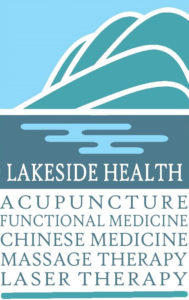Question:
There’s a wide range of recommendations for how much vitamin D to take. How do I know for sure that I need to take it and how much?
Dr. Donna Rasplica, B.C. Reg. Doctor of Traditional Chinese Medicine, loves how traditional herbal medicines and therapies can be matched to the individual. She specializes in treating pain, chronic diseases, and problems of aging.
ANSWER:
In addition to its essential role in bone health vitamin D helps regulate hundreds of genes and is in fact more a hormone than vitamin. Less than optimal levels of D are associated with depression, anxiety, heart failure, hypertension, diabetes, increased cancer risk, MS, poor immunity, muscle pain and fatigue. One survey found an association between death from any cause and low levels of D!
The sun, of course is our best source and – an indication of its importance – it’s the only vitamin that we can make directly from sunlight. D is hardly found in food. Fatty fish have small amounts (salmon, tuna…cod liver oil!). Some foods – milk, cereal, eggs – have been ‘fortified’ with D. Most Canadians are deficient. How do you know you’re one of them?
Here are five indications you may be lacking D: muscle weakness with reduced stamina; women low in D are twice as likely to suffer depression; chronic pain is linked to deficient D, especially in those with darker skin; with low D blood pressure can rise. Finally, a study in the Journal of Clinical Sleep Medicine reported low levels of D were linked to daytime sleepiness. Research just published this month shows D regulates genes involved in the circadian rhythm and a study is presently underway to evaluate its effects in treatment of low back disc herniation.
The importance of D for bone health has long been acknowledged but the necessity of vitamin K in helping to direct calcium to bones and not arteries is more recent understanding. A recent study comparing D alone to D with K on progression of coronary artery calcification and thickness of carotid artery lining showed slower calcification for D with K.
Causes of D deficiency include use of sunscreen – SPF 15 reduces synthesis of D by 99%. The low angle of the sun in Canada means we make very little D in winter months. Anti-seizure and barbiturate meds can impair the body’s ability to make D.
Levels of D can be measured with an inexpensive blood spot test which you can purchase yourself. Shuswap Acupuncture offers one for about $85. I’d recommend to test twice a year – at the end of winter for lowest levels and in August or September for highest levels. If you supplement with D, any time of the year is a good time to test. If you’ve recently changed your dose, however, wait at least 4 weeks before testing.
A calculation error may have substantially underestimated the standard vitamin D recommendations. At 600 IU/day through age 70 and 800 IU/day for those older they are far too low – by a factor of ten – say researchers at UC San Diego and the University of Alberta. Calculations by these researchers have shown that these doses are only about one-tenth those needed to cut incidence of diseases related to vitamin D deficiency”.
So, 3000 to 5000 IU daily for adults is a good starting dose. It will probably take at least 6000 IU to raise your tested blood levels (vitaminDcouncil.org). Retesting 6 months after taking a higher dose is recommended.
It’s always a good idea to consult a health care professional before supplementing. There are cautions for those taking digoxin, thiazide diuretics and possibly beta blockers. If you have high blood calcium levels don’t take D unless under care of a physician. Get advice from a specialist if you have lymphoma, or a granulomatous disease.



